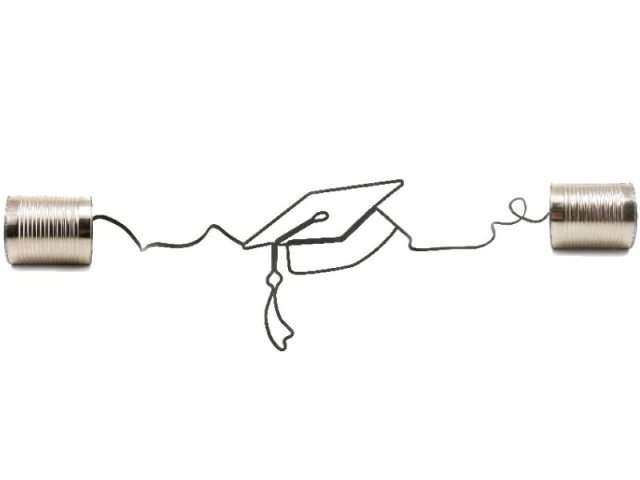UoP initiative: Distance learning sidesteps traditional barriers to education
Programme aims to open doors for those unable to attend university.

Programme aims to open
doors for those unable to
attend university. DESIGN: FAIZAN DAWOOD
The University of Peshawar (UoP) has started a distance-learning programme to provide academic opportunities to thousands of private students who may be unable to attend university.
In response to a proposal by the UoP, the Higher Education Commission initiated and sponsored a project to deliver distance-education through six public-sector universities in Pakistan.
This project was implemented in the University of Peshawar, University of Sindh (Jamshoro), University of Karachi (Karachi), University of Punjab (Lahore), Bahauddin Zakariya University (Multan) and Gomal University Dera Ismail Khan (DI Khan).
The difference between the traditional system of education and distance learning lies fundamentally in the teaching methodology and the use of technology to make higher education accessible to a large number of people.
Talking to The Express Tribune, UoP Distance Education Director Dr Hafiz Muhammad Inamullah said the main objective of the programme is to enhance the quality of education for private students and to provide in-person coaching facilities in addition to other tools.

“The idea of distance education has more relevance and acceptance in Pakistan because of restrictions imposed on women and the prevalence of poverty, which may limit someone’s access to university,” he said.
The female literacy rate in Pakistan is 61% against 79% for males in Pakistan for ages 15 to 24, according to the United Nations Educational, Scientific and Cultural Organisation.
Inamullah rightly contends such figures would be far worse for women from less urban and/or more conservative parts of the country.
The adult literacy rate for Khyber-Pakhtunkhwa (K-P) is 55%, according to a 2010-2011 Pakistan Bureau of Statistics report. Female literacy rate in the province is 42% and male literacy rate is 67%. (For the purpose of the report, literacy is defined as the ability to read a newspaper and write a letter).

The same paper states 41% of the population (26% females and 57% males) in K-P completed primary level or higher education. In rural areas, only 22% women completed such education as compared with 42% in urban areas.
Low-income groups in Pakistan are marginalised – they have more college dropouts, and have limited access to higher education.
The rate of poverty is higher in rural areas, where formal education is a less established practice, he said. “Their children have little or no chance of pursuing higher education in fields like business administration, computer science, medicine and engineering.”

The UoP is attempting to meet this challenge by keeping the costs at a minimum, he said.
The Directorate of Distance Education was established in 2007 in UoP and had English, International Relations and Economics graduate departments to begin with.
The programme took off in 2010 with 300 students – 70% women and 30% men – who are now in their final year.
More departments were added to the programme to include Arabic, Bachelor of Education (BEd), Masters of Education (MEd), Islamiat, Political Science, Persian, Psychology and Urdu.

“It will open up educational opportunities for professionals and provide academic access to women at their doorstep,” said Inamullah. “As far as the curriculum is concerned, it is more or less the same.”
The programme would be delivered through audio-visual lectures provided on CDs and self-instructional printed reading material.

The UoP is currently in the process of setting up 24 learning centres across the province for mandatory seminars and lectures. These learning centres will also hold group tutorial sessions.
The university also plans to use a learning management system – internet-based software – to manage and automate the administration and delivery of their distance learning programme.
The programme runs for two years and each academic year lasts nine months and costs Rs18,000. Admissions are open in January each year.
Published in The Express Tribune, January 28th, 2013.













COMMENTS
Comments are moderated and generally will be posted if they are on-topic and not abusive.
For more information, please see our Comments FAQ